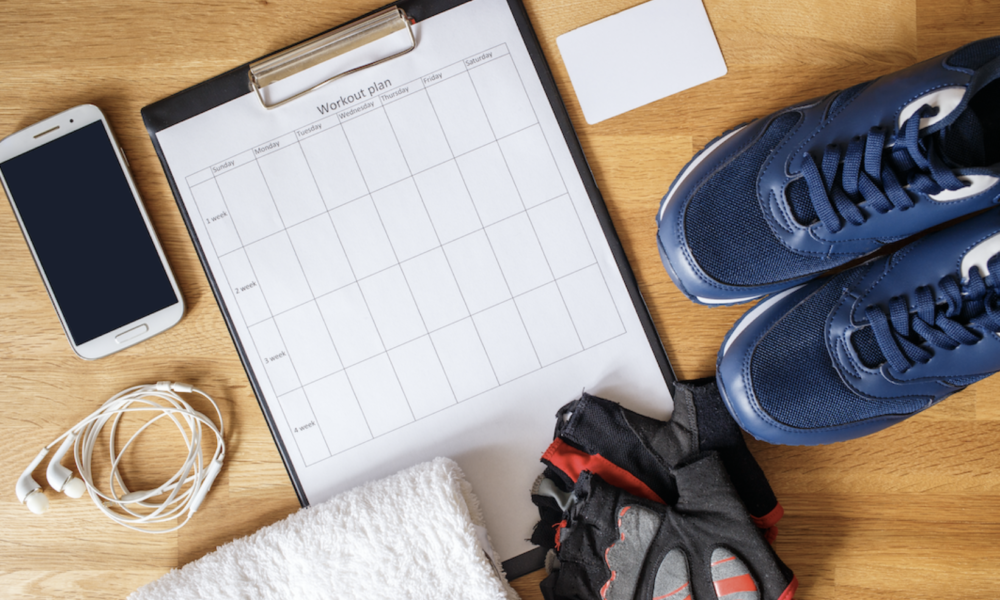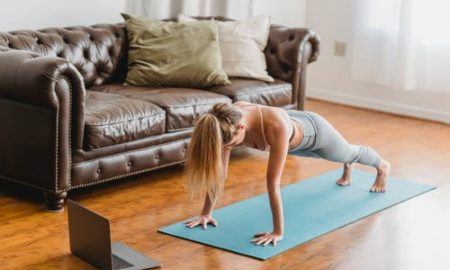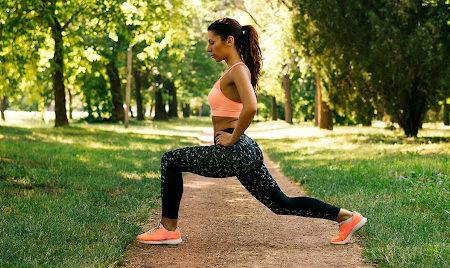

Fitness and diet are a much-talked-about topic today. Everyone wants to be healthy and fit, and two inevitable ways to achieve that have always been exercising and healthy dieting. This article gives insight into how to set healthy fitness and diet goals.
Starting a fitness journey is not easy. You will have to make a lot of changes both in food and lifestyle. It can be overwhelming, especially at the onset, and you may find yourself having to give up. However, setting fitness and diet goals can help you stay on course. A well-structured goal can give you that extra push needed to keep going even when you lack the motivation or inspiration.
What is goal setting?
A goal defines the results you are trying to achieve, and setting goals can be a powerful way to help you achieve what you want in life.
Setting goals is all about identifying what you want to have or improve on, drawing up actionable steps on how to achieve that, and then focusing on those steps to get the desired result.
The importance of setting goals
Setting fitness goals is important for your fitness journey. With goals, that which seems impossible starts looking possible. Goals keep you on your toes and push you through discomfort and challenges until you achieve your aim. Setting goals is important in every aspect of life, rather it by your career, academics, personal growth, or body fitness. Setting fitness goals is a way to hold yourself accountable.
The importance of setting goals includes:
- Goals serve as a measuring stick, i.e. for measuring progress
- Goals offer motivation and provide purpose
- Goals help you define success
- They hold you accountable
- They help inform your action, i.e., they help you determine the next thing you need to do
- Goals help you set your priority
- Your goals help you communicate your purpose to others
- Setting goals make it easier to recognize progress
- Goals can boost your morale
Tips for setting effective fitness goals

Have you gotten to the point where you want to make changes to certain life habits that affect your body fitness? Setting fitness goals is one effective way to set yourself up for success and get motivation. Let’s get started with tips for setting practical fitness goals!
- Don’t procrastinate
You might be tempted to shift your goal setting to a stipulated time in the future, but that is not necessary. It would be best if you started now. Setting goals is not an arduous task, and you don’t require many resources to get started. All you need is a notepad and anything for writing or documenting them.
- Define your goal
The next step in setting an effective fitness goal is to define your goal. Your goal must not be the same as your friend’s goal. Your goal should be unique to your needs. Your goal should be “what you want”.
- Set SMART goals
This is the most important part of fitness goal setting. Many people miss out on this aspect and end up setting fitness goals that are not relevant, achievable, or measurable. You must be smart about setting your fitness goals. SMART here is used as an acronym for specific, measurable, achievable, relevant, and timely. Let’s go through each of these.
Specific goals: Specificity means a clear definition of what you want to achieve. If you set a fitness goal that simply says, “I want to get fit”, that is a very broad and ambiguous goal. It doesn’t pass as a practical goal because it is not specific. What exactly does ‘fit’ mean for you? That is what you have to describe. You have to be detailed by describing the ‘who’, ‘what’, ‘where’, ‘how’, and ‘why’.
Measurable goals: You should set goals that you can track and measure. This will help you know when you are close to achieving your goals and motivate you to push harder to achieve the set goal. For instance, saying you want to perform “30 pushups” is a good goal because here, you can measure your progress using the number of pushups you can do in a row.
Achievable goals: While your fitness goal is meant to challenge you, it should also be achievable and realistic. It is great to set big goals for yourself but it is not practical to set a goal that says, “I want to be able to do 100 pushups in a row within two weeks”, when you may not be able to do 10 pushups in a row when starting off. Breaking that big goal into smaller achievable bits will help your fitness journey. Not being realistic and setting unachievable goals can ultimately lead to disappointment. We want to always set ourselves up for success and having achievable goals will help build your confidence and help towards achieving long-term fitness goals.
Relevant goals: Don’t set a fitness goal of “doing four rounds of dumbbell workouts four times a week” because that is your friend’s goal. Whatever fitness goals you are setting should be relevant to your life, your lifestyle, and your health. Think of why you want to achieve that goal and how it can improve your quality of life.
Time-specific goals: In life, we work with time. That applies to goals we set for ourselves as well. Your fitness goals should have a starting time as well as a deadline. Say you want to be able to do two rounds of 20 pushups within a specified period. Attaching a realistic time frame to your fitness goals makes it all easier to plan and create schedules aimed at achieving your set goal.
Tips for setting diet goals

Dieting can be an important part of achieving your fitness goals to get to the target weight you would like to achieve. Just like setting fitness goals, you have to be SMART when setting your dieting goals. Here are some tips for setting effective diet goals:
- Start with setting small goals
You might think making dietary changes is easy until you start. You find yourself craving for your favorite snack, which you have sworn to cut off! The fact is that you might not be able to cut off everything at once; therefore, starting small might be a more realistic goal. It is okay to start with smaller goals. When you achieve those goals, then work your way up to larger goals. Taking baby steps first is better than starting at a full sprint, which could lead to you falling flat on your face!
- Figure out the diet plan to work with
You must have a diet strategy. Instead of just writing, “I want to cut off processed foods and refined sugars”, it might help to write down how you plan to achieve this. Talk about how you will replace ice cream with yogurt and sugary drinks with water, smoothies, and fruits. Write out your diet and plan your meals. Planning will lead to your ultimate success in achieving your fitness goals.
- Don’t expect results overnight
If your aim of setting diet goals is to lose weight, you have to be patient and trust in the process and your plan. Losing 10 pounds within one week with your diet goals might be unachievable; set a goal you can reach. Many people may quit after they see no results in the first few weeks. Be patient and continue to stick with your fitness plan and those results will come!
- Track your progress
Track your progress and find out the effects of the efforts you have put in. Goal setting should give room for measuring the success of your diet goal. How many unhealthy foods were you able to cut off within a month, and how many healthy ones did you introduce to your meals? Have you noticed any results? You should know your exact goals based on what YOU want to achieve and track that progress.
Mistakes to avoid

There are some common mistakes people make while setting their goals. You must avoid making these mistakes when setting your fitness and diet goals. Learn from the mistakes of others to avoid pitfalls on the path to achieving your goals.
Here are some mistakes to avoid:
- Not tracking your progress
What is the need of setting up goals if you can’t track your progress? Your goal should be measurable so you can record your progress. Recording and measuring your progress enables you to see the benefits of the efforts you have been putting in. The idea behind this is that you get motivated to push further and put in more effort.
- Not adjusting your goals when necessary
Goals don’t have to be unchangeable. Also, adjusting your goals doesn’t mean failure. Sometimes, you have to change your goals when you find out they are not feasible for your current situation. Do not be hard on yourself if this is the case. Adjusting your goals so they fit within your diet and fitness goals.
- Punishing failures or failing to celebrate success
Some people punish themselves when they don’t meet goals, but that’s not the best way to react to not meeting a goal. How about restrategizing? Why not go back to the drawing board and try to find out what happened or what could have gone wrong. In that way, you might gain insight into a better way to achieve your goal.
While punishing yourself can be counterproductive, celebrating your achievements, no matter how small they may seem, can be helpful and can motivate you.
- Focusing on the wrong things
One of the very wrong things people tend to focus on is perfection. Concentrating on getting it all perfect is wrong and might ruin things for you. It would blind you to the things you have achieved, which are worth celebrating while highlighting the slight mistakes you have made. Instead of focusing on perfection, focus on progress and consistency.
Conclusion
Having a healthy fitness and diet goal can help your fitness journey. However, ensure you set the right goals, goals that are SMART. Write down your reasons for selecting that goal, and most importantly, keep track of your progress while at it.






















You must be logged in to post a comment Login